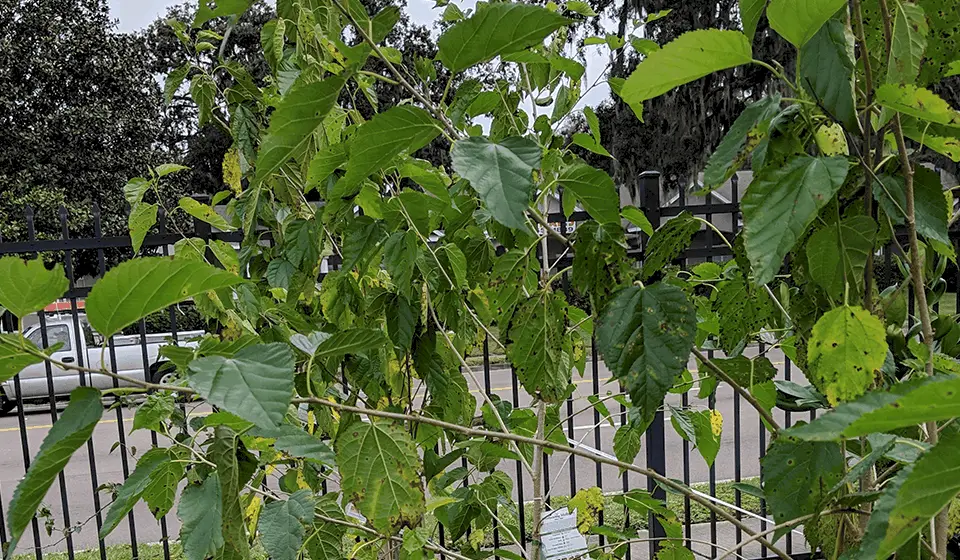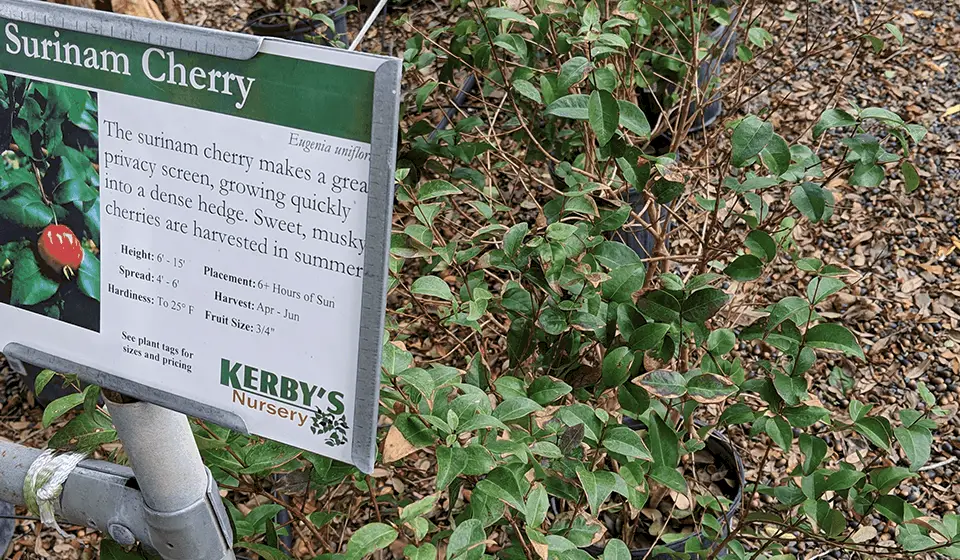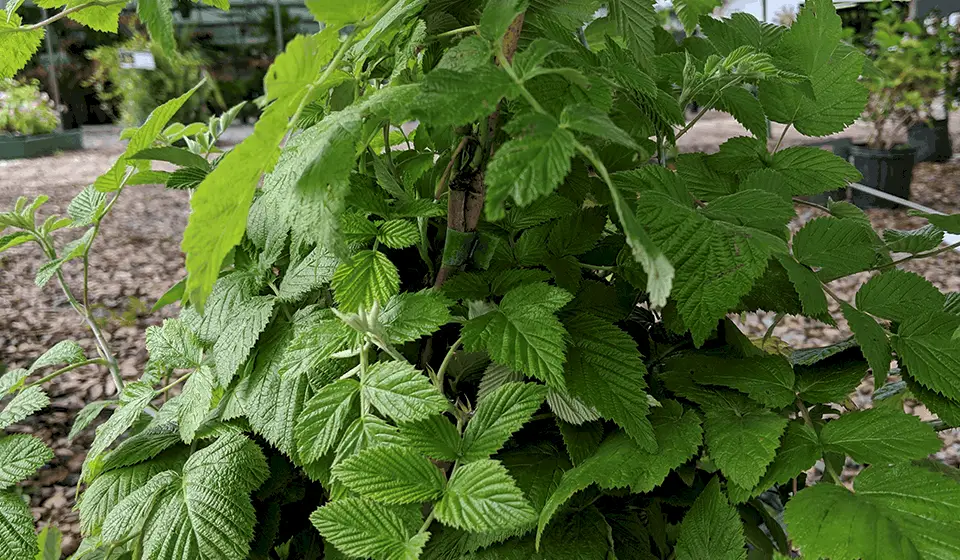I was thinking the other day, what berries grow best in Florida? So I decided to do some research before committing to diving into berry life. I want to grow berries with the least amount of effort.
This article is heavily influenced by David the good and the University of Florida. Thank you guys so much for doing all this berry research!
So, what are the best berries to grow in Florida? The best berries for Florida are Blackberries, Huckleberries, Mulberries, Surinam Cherries, and Raspberries.
There are certain varieties of each berry that grows the best in Florida. read on to find out which ones have adapted to our climate and will produce a bumper crop with the least amount of effort.
The Best Berries To Grow In Florida
Blackberry
Blackberries can be found growing in the wild, all on their own in Florida. If they can grow without much care, surely you shouldn’t have a problem growing these guys.
I’ve never been brave enough to go out and eat a wild blackberry before but from what I’ve read it seems that most of the kinds growing wild are pretty flavorless and often bitter. The University of Florida recommends special varieties that do well in Florida.
Florida friendly blackberry varieties: Apache, Arapaho, Chickasaw, Choctaw, Ouachita, Kiowa, Rosborough, and Southern
All of the varieties mentioned will do well in both north and central Florida. The Rosborough and southern varieties of blackberries will do well in the southern part of the state. They are can take the warmer weather that South Florida has.
The best time to plant your blackberries are from December to February.
They can be grown as a bush or they can be grown up or around something. This makes blackberries a good option for the herbaceous layer of the vining layer if you are trying to design a Florida food forest.
Blackberries can be grown in the shade but they will not thrive, they definitely prefer the sunlight. To be fully productive plants they also need a lot to drink.
I doubt you will kill them if you don’t irrigate and care for regularly but you will not get large, and juicy berries either.
Blackberries start as a bright red berry and as they ripen they turn black. They are easily squished so handle with care.
Huckleberry
I’ve got a buddy that travels to Montana every year to work at the pole bridge mercantile and they are famous up there for their huckleberry pie! people go nuts for this stuff.
We can grow it here in Florida, pretty easily too. Gardens throughout the state should not have a problem growing huckleberry.
The huckleberry is closely related to the blueberry. It has an equally sweet, kind of tart flavor. Only after it has been cooked through.
Lots of people do not enjoy the taste of raw huckleberries. I’d try them at least once raw just to see what they are all about though.
They do taste great as a jam or made into pies!
If you are searching for seeds, it will be listed as garden huckleberry
These plants are related to and resemble pepper plants. They can grow to about 4 feet tall and they will produce fruit in the first year they are planted.
One scary fact about this plant is that it also resembles and is related to the deadly poisons nightshade. So, if you see something growing around in the wild and you think it might be huckleberry, but you’re not sure. Just keep on walking.
The best time to start growing your huckleberry plants in Florida is in the early spring and fall seasons. Somewhere close to March and then you have another opportunity towards the end of September as our weather starts to cool down form the summer.
I found that a good way to tell when your huckleberry is ripe is to take a look at how shiny it is. Ripe berries will look a little dull and be a darker color and under ripe berries will be shinier.
Mulberry

One of the easiest berries to grow in Florida, if not the easiest. It can grow in deep south Florida and can still withstand the north Florida freezes.
It likes our sandy Florida soil and is drought tolerant once established. They like full sun or they can be grown in a little bit of shade.
This thing produces loads of fruit, so many berries that you aren’t going to be able to eat them all.
If you are wanting to grow from seed you are going to be waiting a while to get fruit. They can take up to 10 years until they bare fruit when grown from seed.
However, if you buy a grafted mulberry or grow from a cutting, you can have fruit in the first year.
Mulberries can grow tall, really fast too. They are almost like a weed, but they like to be pruned.
This is great for a food forest because this plant not only produces loads of food but it also makes mulch, and brings in birds to the garden.
You can prune them into a little shrub or you can grow them as a medium sized tree. Just keep in mind that you want to be able to harvest the berries easily.
There are three types of mulberry; Red, White and Black Mulberry.
Red mulberries produce deep red to black fruits.
White mulberries aren’t always white. They can range in color from white to deep purple and sometimes even pink.
I’ve read that some people think that the black mulberry has the best-tasting fruit and in Florida, it also grows much smaller than the other two varieties which makes harvesting easier.
Surinam Cherry

This plant can go by a few names; Brazilian cherry, Cayenne cherry, Pitanga, and the Florida cherry. The surinam cherry can grow up to 25 feet tall. It has two varieties, one with a red berry and another with a darker, almost black berry.
This plant thrives in tropical to subtropical climates. It’s perfect for central and south Florida. in north Florida, this plant can survive as it matures. Young plants are damaged by weather around 22ºF.
Keep younger plants in pots so that you can bring them inside or move them into your greenhouse.
The surinam cherry has a long taproot. That makes this plant drought tolerant. It also digs deep into the soil and brings up nutrients that other, more shallow rooted plants can’t get to.
They thrive in full Florida sun, they aren’t scared to take in the rays. Spotted shade shouldn’t both them but if they are shaded for too long they will stay small.
The fruits on these guys are an acquired taste. Everybody says that they are a love it or you hate it kind of thing.
The only time that you should even think about eating these fruits is when they are completely ripe. You should let curiosity get the best of you one time and try an underripe fruit. I think it’s unanimous though, they suck when under ripe.
The fruits go through a lot of color changes as they ripen. They star as a pale green, move to an orange and then to a bright red. They still aren’t all the way ripe yet, you want to eat them only when they are a deep purplish color.
In Florida, we can expect two harvests. One in spring and another in mid to late fall.
Raspberry

Really the only raspberry that can be grown in Florida is the Mysore Raspberry. David the good, has grown this successfully in north Florida and has reported success in south Florida as well.
Most raspberries need cold cold weather to be productive plants and don’t really like the heat. Mysore raspberries are different in that way, they don’t seem to mind the Florida heat.
These raspberries also prefer a little bit of shade. They grow more like a shrub and can be up to 10 feet tall. Having them planted under a larger tree and protected by the tree’s shade is the perfect way to maximize your garden space and give your berries the best climate for them.
One thing David did say about these berries is that the taste was kind of bland. He also thought that he may have watered them and fertilized them too heavily. Causing all of the flavors to be washed right out of the berry.
Another thing to be warned of with this berry is that it has thorns. Even the leaves are thorny! So wear gloves when working with this plant for sure.
The fruits are born green and then turn to bright red. They are ripe when they are a deep purple.
Best Soil For Berries
Berries generally prefer a soil that is slightly more acid. If you’re planting your berries directly into the ground you should begin building your soil with lots of organic material. things like pine needles, wood chips and even throwing some peat moss in there is good too. All of these things will help to build a healthy soil and keep your plants happy.
The best thing you can do for your Florida soil is to mulch, mulch and mulch. Keep piling it on there. Keep planting and in no time you will start to see dark, rich garden soil.
If you’re growing your berries in a pot, and want to make your own mix, I’ve found really good luck with this soil for most of my gardening experience:
- 40% peat moss or coco coir(Peat is cheaper but it’s farming practices aren’t sustainable.)
- 40% compost
- 20% vermiculite or perlite
- A fungi additive because this makes a web of nutrient sharing goodness
- Worm castings for a good nutrient boost.
